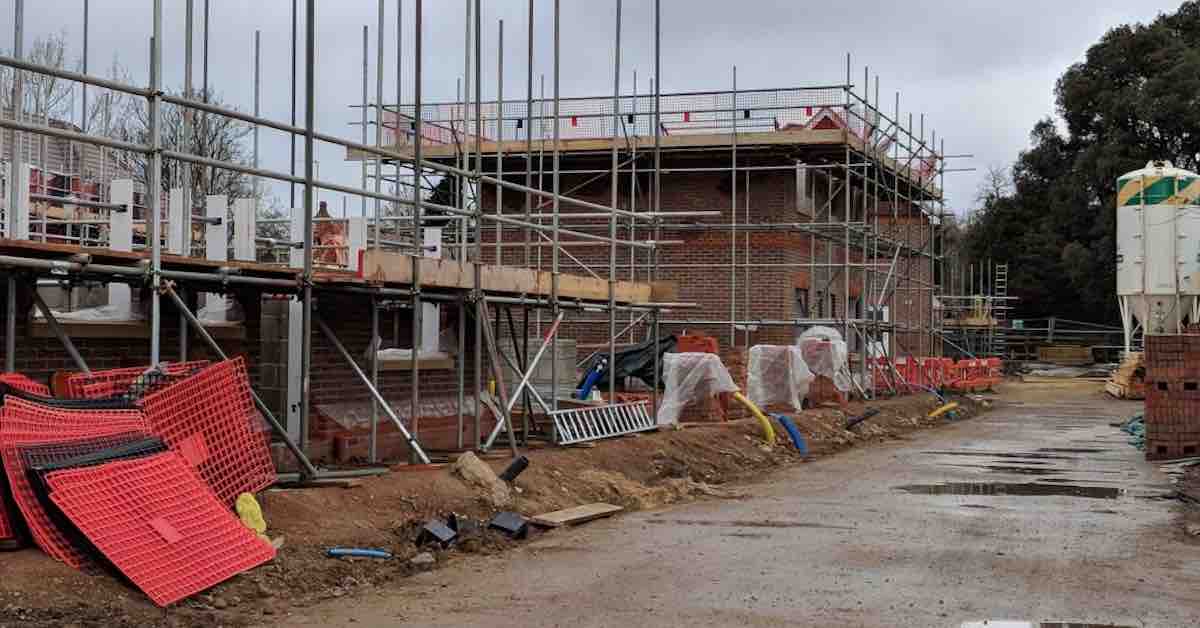Cautious optimism has dominated the thoughts of our Editorial Board over the Government’s changes to the NPPF to get more houses built.
The Government announced an overhaul of the planning system on Tuesday, July 30 and our partners have generally given the announcement the thumbs-up.
But some are asking how the intentions will translate into action at local authority level.
Jonny Denton, group sales and land manager for Country Estates, said: “From a development perspective it is an encouraging start to life for the new administration and we can all appreciate proactive steps to address the planning world which has been difficult for some time now.
“The industry has had a much-needed moral boost and has got a spring in its step with a new sense of optimism for the second half of the year and beyond.
“It does go without saying that it is just a positive start and we do need local authorities to get on board with the changes and also give their officers the ability to make decisions and then support them on decisions made.
“I do hope that politics can be removed from the decision making for a while and decisions can be granted on merit rather than made to prevent upsetting voters.”
Howard Felstead, planning senior associate for Mills & Reeve, said: “The Government’s consultation says, ‘we expect immediate action’. No wonder! Their changes need to make an impact quickly to have any hope of achieving their aims.
“These measures are just the first stage – they are seeking to make some quick changes now, presumably in the hope they get the market moving in the right direction, whilst ministers work on the bigger reforms like establishing mayoral-led strategic plans to drive regional collaboration; introducing the new, leaner (hopefully faster) system of Local Plans and unleashing new towns.
“It’s bold and they are pulling the right levers, but the scale of the challenge to deliver 1.5m homes in five years is enormous, not to mention their broader ambitions around decarbonisation and economic growth.
“In order to get anywhere close to their target by the end of their term, they need sustained growth, including house building at levels we have not seen since 1970, so the remaining reforms will need to follow fast. Interesting times!”
Ifti Maniar, planning director of WWA Studios, said: “As expected, the Government has placed greater emphasis on building more housing, aiming to boost economic growth and address the shortfall in housing provision. Consequently, local housing targets are now mandatory, with an increased target of 370,000 homes per year.
“A significant reversal in the December 2023 NPPF is that if planning authorities cannot meet their housing needs without using Green Belt land, the new NPPF will require them to review and propose alterations to these boundaries.
“This is mandated unless the review provides clear evidence that such alterations would fundamentally undermine the function of the Green Belt across the area of the plan as a whole.
“In my opinion, this change will make it more challenging for some local authorities to rely on Green Belt constraints to avoid meeting their full local housing needs in their local plans. This will open up many opportunities in the Grey/Green Belt, particularly where authorities are unable to meet their housing targets.”
Andy Moffat, head of planning for Savills in the East of England, said: “Policy stability is largely a good thing – providing certainty for decision making and investment – and this is undoubtedly a move in the right direction to get the homes and infrastructure the region needs.
“The Government has placed planning reform at the heart of its growth-led agenda and the Secretary of State was clear that it is a matter of ‘how’ and not ‘if’ new homes are built.
But whilst the Secretary of State was keen to emphasise the need to avoid too much reform, there is likely still more to come, most notably the measures in the Planning & Infrastructure Bill, what remaining elements of the Levelling Up Act are to be implemented and announcements around strategic planning and the first round of New Towns designations.
“We will continue to keep our eyes on the planning horizon and await the results of the consultation later this year.”
Ashley Maltman, head of planning for Pye Homes, said: “It’s great to see the new Government has already announced their consultation on the National Planning Policy Framework and updated standard methodology which include bringing back mandatory housing targets, working more closely with local authorities and setting higher expectations to help boost the sector.
“Addressing the estimated shortage of 4.3 million homes in the UK by increasing council targets and switching up the current planning systems could be ambitious and will be no mean feat.
“The longer-term initiatives revealed, such as the Planning and Infrastructure Bill and New Towns Programme to speed up the delivery to meet the target are also interesting, but in order to get to 1.5m new homes over the next five years, we’re going to need key reforms and systems in place.
“Whilst Pye Homes will only play a small but important part in this, our ethos will always focus on building with care, and with sustainability and communities at the forefront.”
Karen Jones, partner and head of planning for Blandy & Blandy, said: “The new NPPF consultation underpinning these latest announcements proposes renewed emphasis on plan led delivery of housing.
“This, with the assurance that the Government is committed to taking action to ensure up to date Local Plans are in place, and an intention expressed that these plans should set out how (and not if) necessary development should happen, sends a strong message of intent.
If local authorities can’t meet housing targets, they will need to look to brownfield land in the Green Belt and their ‘Grey Belt’. Grey Belt is defined as land in the Green Belt, comprising previously developed land and any other parcels and/or areas of Green Belt land that make a limited contribution to Green Belt purposes.
“This will allow greater flexibility and, together with reforms proposed in the forthcoming Planning and Infrastructure Bill, and a new long term housing strategy, can only be for the good in meeting housing needs.
James Miller, senior associate Thames Valley for RLB, said: “It is great to see the Labour manifesto following through with housing, especially with the housing crisis pressures increasing. Clearly Angela Rayner is looking for all tenures to deliver, recently stating ‘schemes with a larger amount of affordable housing are likely to be completed faster’.
“With new housing targets almost doubling the anticipated delivery this year, the industry will need to embrace all forms of construction to keep up with demand, especially with other housing pressures, such as retro fit and maintenance programmes, all delivered from a limited supply chain.
“Finally, will the planning departments keep up with all the new ‘Grey Belt’ planning applications?”
© Thames Tap (powered by ukpropertyforums.com).
Sign up to receive our weekly free journal, The Forum here.









